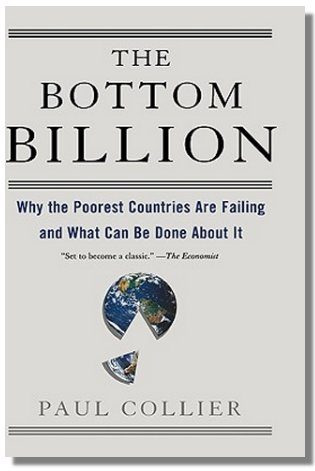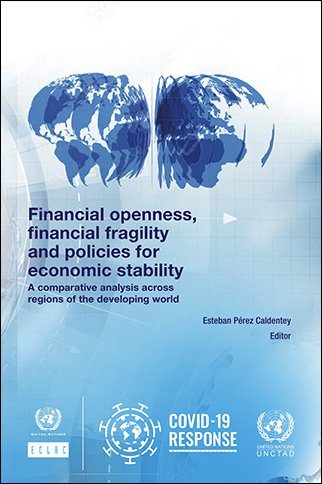Publisher: Third World Network Year: 2023 No. of pages: 42 Download now About the Book…
The Bottom Billion: Why the poorest countries are failing and what can be done about it Author: Paul Collier (Review by Erik S. Reinert)

Publisher: Oxford University Press, 2008
ISBN 978-0-19-537338-7
Review by Erik S. Reinert
Paul Collier is an Africa expert and a former director of the Development Research Group of the World Bank. At the core of the argument in his bestselling The bottom billion are four ‘traps’ that lock Africa into poverty: the conflict trap, the natural resource trap, the trap of being landlocked with bad neighbours, and the trap of bad governance in a small country. Compared to what used to be ‘development economics’, Collier represents a new economic genre.
Collier and his colleagues Jeffrey Sachs and William Easterly – all former employees of the Washington Institutions – are the forefront of today’s thinking about economic development. It is interesting to compare this literature to what, until about thirty years ago, was ‘classical development economics’. In spite of a good track record of promoting economic development during the decades following the Second World War, the field of development economics was virtually mobbed out of existence. The reason for this was twofold: first, the field did not have any ‘rigorous models’ that became fashionable; and second, it had built-in doubts that the neoliberal project of instant global free trade would benefit the poorest countries of the world.
Collier, Sachs, and Easterly in fact belong to a new and different academic sub-field, which we could call ‘development aid strategy’, that took over the position once occupied by development economics. Since no country has ever become wealthy through development aid (which is not per se an argument against aid), this development aid literature represents a problem. It contains little theory about what causes economic development besides aid, and – of particular importance – does not look at the strategies followed by today’s wealthy countries in their transition from poor to rich.
Compared to classical development economics, Collier’s analysis is surprisingly static. Development economics typically postulated virtuous and vicious circles in the economy, not static traps. At the core of the virtuous circles of development lay a large division of labour, alongside the increasing returns and technological change found in the industrial sector. Monoculture, diminishing returns, and increasing population pressure formed the core of the vicious circles. Collier also discusses ‘traps’ that, to a large extent, are a result of poverty, not their root cause. Had he focused on an ‘unemployment trap’, he would have been able, to some degree, to explain both the conflict trap and the bad governance trap. It can be argued that the most important raw material for the kind of conflict from which Africa suffers is unemployed young men. But the World Bank has almost consistently used models assuming full employment, thus assuming away a huge part of the problem of poverty. Models including unemployment would have produced situations where free trade is not always the best policy – when a country is far from its production possibility frontier – and during the neo-liberal reign such policy recommendations were unwanted for ideological reasons. The bottom billion appears after a long period of dominance of Washington Consensus policies in the ‘developing world’. Compared to the first decades after the Second World War, the growth record of this neo-liberal period has been dismal. In Africa, in the former Soviet Union, and in many small Latin American countries, this policy did not lead to a Schumpeterian creative destruction but rather to a destructive destruction. Industries died, but very little new development came instead. Indeed it is clear that today’s most successful nations – China, India, and Brazil – continued to grow during the neo-liberal period essentially as a result of their ideological inertia. They did not buy the core recommendation of neo-liberalism: free trade shock therapy and the rolling back of the state. In this academic field of ‘development aid strategy’ a theoretical axis appeared between the development aid enthusiasts, exemplified by Jeffrey Sachs, the father of the Millennium Development Goals (The end of poverty, 2005) on the one hand, and William Easterly, who, briefly stated, is of the opinion that development aid does not work (The white man’s burden, 2006), on the other. From this perspective.
The bottom billion represents a kind of middle position between Sachs’ optimism concerning aid and Easterly’s pessimism. However, all three have a past in important positions in Washington institutions whose shock therapies caused so much damage to the economic structures of many poor countries. These authors do not come from a position of objectivity when they attempt to explain what went wrong. The bottom billion is heavily marked by the need to defend the past policies of the World Bank. The most salient misinterpretation of history is when Collier presents the successes of China and India as results of the policies of the Washington institutions. In reality, the basis of these two nations’ success, apart from the size of their markets, is they have built an industrial sector consistently for more than fifty years and that, contrary to the World Bank recommendations, they opened their economies gradually, not through shock therapy. Clearly these countries both clung to the planning paradigm for too long, but history shows that following this type of industrialization strategy too long is infinitely better than never having embarked upon it at all. In spite of internal differences, classical development economists all agreed that development required industrialization. The historical record of all developed countries – going back at least 500 years – confirms this policy as a mandatory passage point to development.
It is also not obvious that Collier’s book uses the right criteria for measuring success. He implicitly sets up maximizing of world trade as a measurement of economic success. However, in many countries – Peru being just one example – globalization has lead to an impressive growth in exports, while real wages have been halved because manufacturing industry has virtually died out, and with it the labour unions that provided ‘stickiness’ to national wages.
In the tradition of the Washington institutions, Collier tends to reverse the directions of the arrows of causality and even to disregard co-evolution of economic structure and institutions. Banking and insurance were invented in cities with a particular economic structure. It is not that Venice invented insurance and thus could have long-distance trade. Insurance was invented to solve a problem of risk distribution in early capitalism. Reducing risk by hugely increasing the number of owners of one single shipload became impractical, and insurance provided a solution. However, the World Bank approach has been to focus on institutions disregarding the underlying economic structures that create them. Establishing institutions from the industrialized West in societies based on subsistence agriculture is futile.
To the economists of the Enlightenment, ‘good governance’ or democracy seemed to be a product of a certain economic structure: diversified nations and city-states such as the Dutch Republic, Florence, and Venice were pioneers of democracy, while feudalism never produced a case of ‘good governance’. Landlocked Florence and Switzerland developed into democracies. A country’s economic structure used to be a key factor explaining both democracy and wealth. Coming from a neo-classical tradition where all economic activities are seen as qualitatively alike, this point escapes Collier and his colleagues.
Collier is right when he claims that high tariffs protecting national monopolies create corruption and high prices, but a solution to that problem would have been to encourage competition, not to kill industry as was done. Collier is also right when he flags the problem of small countries. Indeed, the minimum efficient size of a moderately wealthy country has no doubt increased considerably. But this argument calls for regional economic integration, not for returning to raw material monoculture. As one eighteenth-century economist put it, diversifying the economy away from dependence on agriculture cured the main ills of mankind: unemployment, superstition, poverty, and shortage of foreign exchange. Today’s failing states in Africa all have one thing in common: a minute industrial sector. In Collier’s defence he does recognize this to some extent, but is seemingly unwilling to endorse the kind of trade policies that would lead to the desired results. Apart from his defence of military intervention in poor countries, his recommendations are not particularly original.
Collier does not analyse the mechanisms that lifted the presently wealthy nations out of poverty. From the Enlightenment through to twentieth-century fascism, Nazism, Stalinism, and Western democracies, all development strategies were based on industrialization. When the Allies wanted to punish Germany after the Second World War the cruelest plan they could come up with was forced deindustrialization: the Morgenthau Plan. This plan was, however, so effective in producing mass poverty that it only lasted two years and was replaced by the Marshall Plan, a plan for re-industrialization. This point was completely lost to development economics under neo-liberalism.
In this longer term perspective, the de-industrialization caused by the neo-liberalist shock therapy – a modern Morgenthau Plan – will increasingly be seen as a folly. Putting Paul Collier, the former chief economist of the World Bank and one of the architects of this folly, in charge of explaining what went wrong with globalization is akin to putting Attila the Hun in charge of the Ministry of Roman Reconstruction. Collier’s book contains more attempts to cover up the past than to present new constructive insights, and more descriptions of symptoms of poverty than of its root causes.
(Erik S. Reinert is assoicated with Tallinn University of Technology and The Other Canon Foundation, Norway)



